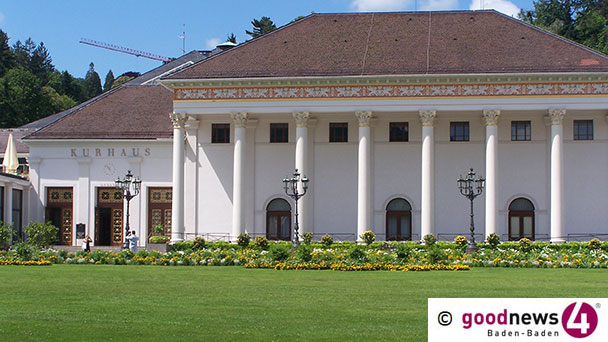Baden-Baden ist Welterbe
So beschreibt die UNESCO unsere Stadt Baden-Baden – Was unsere Stadt weltberühmt machte

Baden-Baden, 26.07.2021, Bericht: Redaktion Dieser Text zur Geschichte und den herausragenden Merkmalen unserer Stadt sollte eine Grundlage sein für eine Kommunikationsinitiative, damit die Baden-Badener mehr wissen über ihre Stadt, deren Geschichte nun zur Grundlage für den Eintrag in die Welterbeliste der UNESCO wurde.
Das Bewusstsein, in einer ganz besonderen Stadt zu leben, wird auch zu einer Änderung des Bewusstseins führen, wenn das Stadtbild wieder einmal den kurzfristigen wirtschaftlichen Interessen von Investoren geopfert wird, die meist nicht vereinbar sind mit dem nachhaltigen Umgang mit Architektur und Natur, was Baden-Baden weltberühmt machte.
Text der UNESCO über Baden-Baden:
FEDERAL REPUBLIC OF GERMANY
Baden-Baden
Baden Baden, situated on the western outskirts of the Black Forest, is without any doubt one of the most important spa centre in Europe, whose name is a symbolic bearer of the subject matter of the series. Bathing in Baden-Baden is a tradition dating back to Roman Antiquity. It was founded in 80 A.D. by the Romans in the place of a former Celtic settlement and named Civitas Aurelia Aquaensis. An interlude (lasting from the 12th century) as the residential city of Baden having ended in the late 17th century, the city was systematically redeveloped as a modern spa town from the earliest years of the 19th century onwards. Located in the valley of the river Oos, the town extends to the slopes of the surrounding landscape. The urban structure consisting of all layers of urban development is preserved in unique diversity and density. The town is composed of several areas of specific types of buildings and ensembles which represent an internationally known and frequented spa in the 19th century as an almost ideal type of the phenomenon: At first, the bath district incorporates the twelve thermal springs, the roman bath ruins, a rare example of a baroque bath inside the New Castle, an finally the «Friedrichsbad» (1877) demonstrating innovative balneology by the end of the 19th century. Secondly, there is the well preserved spa district consisting of the earliest preserved European example of a «Kurhaus» in its centre. The building dates back to 1821 and was built by Friedrich Winbrenner, one of the most significant representatives of early classicism in Germany. Its interior comprises four rare examples of fine ball rooms decorated in the baroque styles of Louis XIII. to Louis XVI. for the French casino tenant Bénazet in 1855. Besides the «Trinkhalle» (1839-42) by Heinrich Hübsch and the Theatre (1860-62), designed by French architects, there still exists a historic chestnut-lined alley, planned in 1765/66 as a link from the old town to the than planned spa district in the wider landscape. Among further representative areas of a great spa town are several villa districts with sacral buildings of different religious denominations (e.g. Russian Church, 1881/82, English Church, 1864-67) built by foreign guests, who frequently settled down here. An exceptional building is the Sturdza Chapel, built in 1863-66 for Mihail Sturdza, Prince of Moldavia, after designs by Leo von Klenze. There are also a wide number of great historic hotels (e.g. Badischer Hof, 1807 by Weinbrenner which is known as the first Grand Hotel in Germany) as well as parks and green spaces. The ideas of Enlightment are reflected in numerous tangible and intangible relicts. The Lichtentaler Allee was designed as an English landscape garden inviting to informal get-together and social mixing of guests. Internationally renowned artists, composers (i.a. Hector Berlioz, Jacques Offenbach) and writers (e.g. Ivan Turgenev, Fyodor Dostoyevsky) had a further impact on Baden-Baden's particular atmosphere of the then called «capitale d'été». The town functioned accordingly as a place for the so called «diplomatie thermale» on several occasions – for instance in 1860 when ten German princes met Napoleon III, or the meeting of the three emperors in 1872: Wilhelm I, Franz Joseph I and the Tsar Alexander II. Notably the Kurhaus with its famous casino played a key role as an international meeting point even across classes. Due to its publicity under the tenant family Bénazet the casino became the focal point of the spa in the course of the 19th century. As it is well preserved and still operating it helps to put Baden-Baden as a unique representative of the so called «Spielbäder» of the mid 19th century.
Quelle: whc.unesco.org
Zurück zur Startseite und zu den weiteren aktuellen Meldungen.







